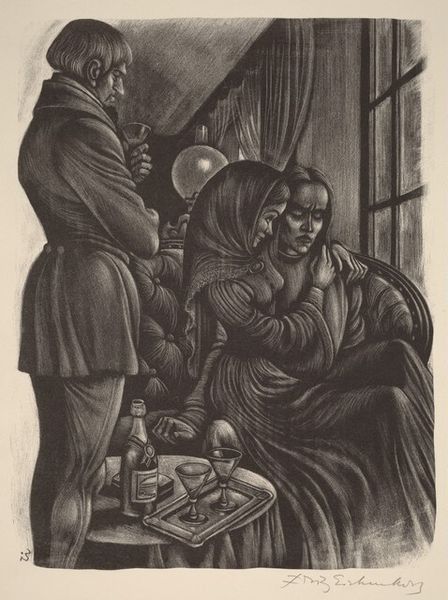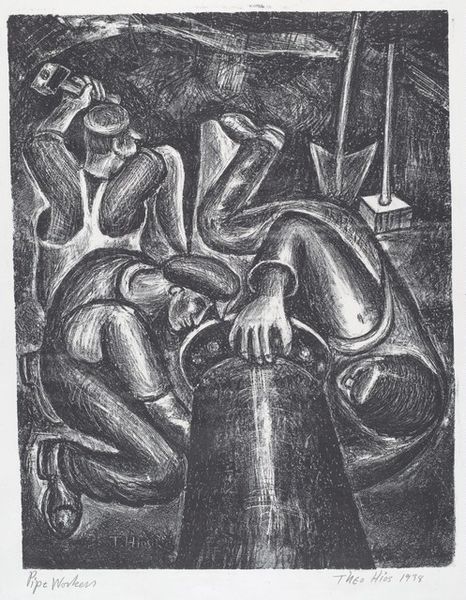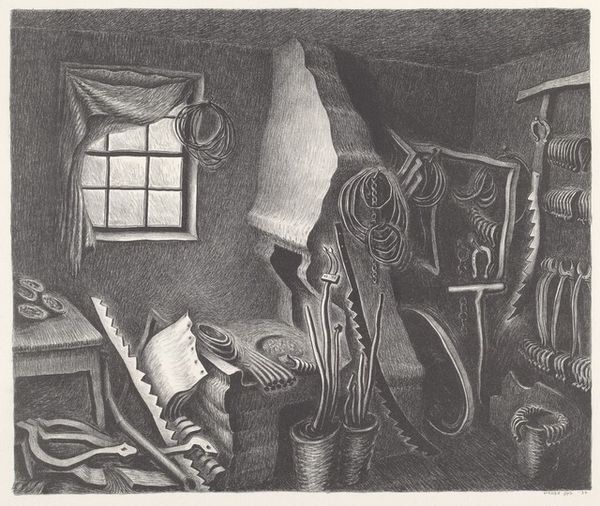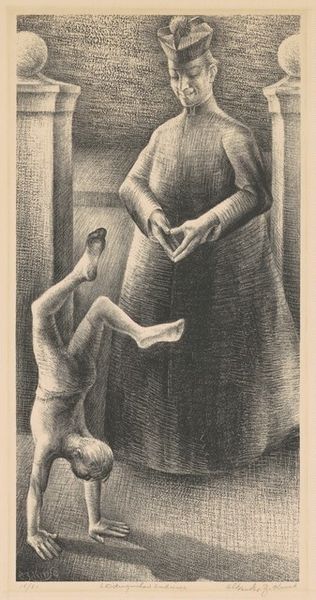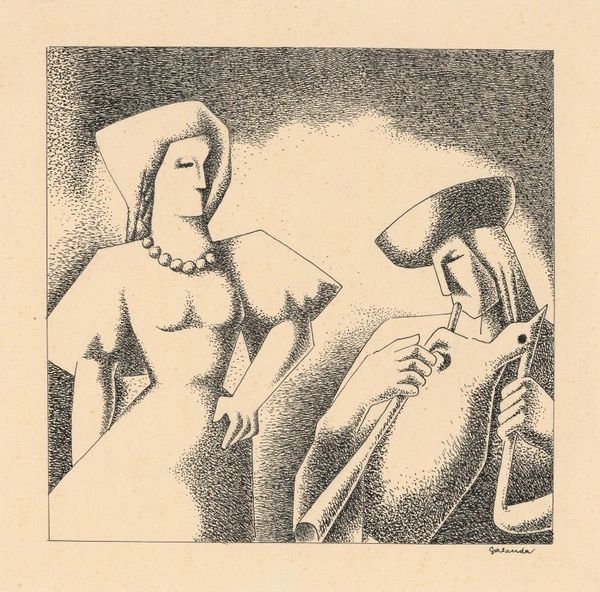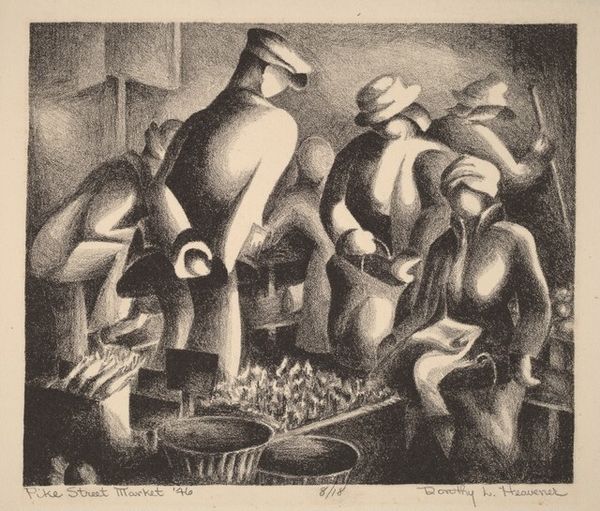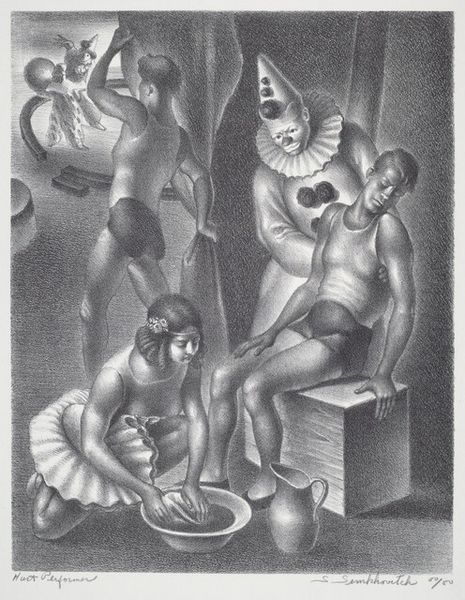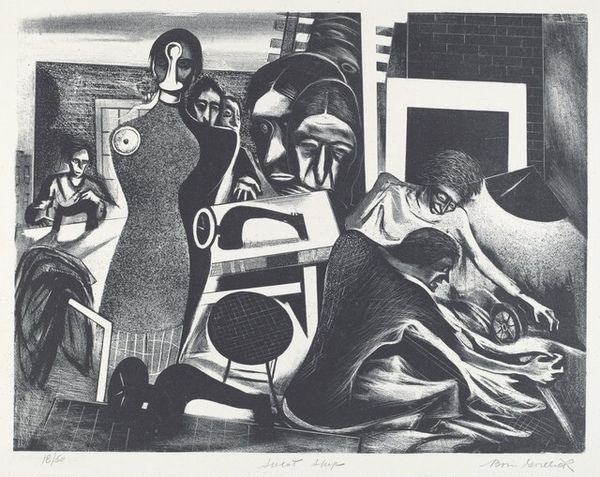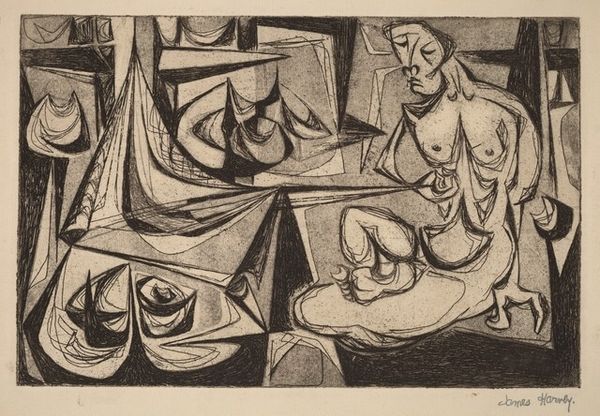
tempera, lithograph, print
#
portrait
#
tempera
#
lithograph
# print
#
landscape
#
mexican-muralism
#
portrait drawing
#
genre-painting
#
portrait art
Dimensions: Image: 246 x 323 mm Sheet: 317 x 459 mm
Copyright: National Gallery of Art: CC0 1.0
Curator: This lithograph before us is Leo Katz’s “Patzcuaro Nocturne I,” created around 1930. It gives such an intimate scene. Editor: The first thing that strikes me is the somber stillness. The women are cloaked in shadow, only touched by candlelight. It evokes a sense of quiet reflection. Curator: Absolutely. The heavy use of chiaroscuro, created through lithographic techniques, highlights the play of light and shadow on the faces and folds of their garments, but it is the medium that does the trick: lithography allows for subtle gradations of tone which captures the stillness, like you said. Editor: And these aren’t just portraits. These hooded figures, reminiscent of Madonnas, carry an immense amount of cultural baggage. It speaks of the legacy of Catholicism in Mexico, even if that reference is in tension with other indigenous influences. Curator: Agreed, we are not only dealing with portraits but genre paintings, depicting women by the fireside. The ceramic objects, like that tall-necked jug on its stone plinth, speaks to a lineage of Mexican crafts that has continued even to the present day. Think of that lithographic stone being processed as yet another product of extraction, refinement and craft in Katz’s day. Editor: I am still returning to those figures. There is an enduring appeal in how Katz rendered their expressions; it brings a depth that invites personal and collective readings. The way one woman holds the cup aloft as if sharing, and how the other looks off in to space. I feel the psychological dimension so clearly. Curator: It’s quite powerful. This print, like many others of its time, provided greater accessibility. This wasn't an oil painting or sculpture for an elite collector, but a print intended for wider circulation. Editor: So in a way it brings this deeply human, almost spiritual image into people's homes. The visual language and emotional intensity endure across time. Curator: By considering both the imagery and the means of production, it deepens my understanding of how "Patzcuaro Nocturne I" functions as a document of its era. Editor: And for me, focusing on the visual symbols and psychology, the artwork opens into much more. Thank you for revealing that, now when I see these types of nocturnal scenes, I'll always remember this particular lithograph.
Comments
No comments
Be the first to comment and join the conversation on the ultimate creative platform.


